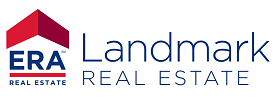Market Watch
Real Estate Going Green
Posted on May 2, 2009Much focus lately has been on “being green” which is evidenced everywhere in the news media. If you were to ask, most people participate in some type of activity that is positive for the environment, whether it be recycling the basics such as paper, glass, and aluminum or using reusable fabric shopping bags. Generally speaking, it has become increasingly easy to “reduce, reuse, recycle” both at home and in the workplace. Earth Day just celebrated its 39th birthday and is now an official day of community service and cleanup in 175 countries worldwide. Arbor Day, which is observed each year on the last Friday of April, has been encouraging the positive act of tree planting and care since 1872.
The real estate industry is also taking great strides to become even better educated on the incorporation of green principles in regard to building practices and property features in residential homes, commercial buildings, developments, and communities. With consumer demand for green consideration rapidly on the rise, it is imperative to be informed about the facts underlying what truly makes a property classified as green.
The National Association of REALTORS® (NAR) offers a Green Designation which is “the definition of green professionalism, excellence, and leadership for today’s real estate practitioners.” It covers residential, commercial, and property management markets, and strongly encourages those in the real estate profession to be a driving force in support of sustainable housing and businesses. The curriculum for the designation includes, in part, the concepts and principles behind building green, the financial advantages of eco-friendly properties, and the significance of LEED, Energy Star®, and other rating systems. LEED (Leadership in Energy and Environmental Design) certification is the accepted standard to measure commercial building “sustainability” which is used in the United States and many other countries. It is administered by the U.S. Green Building Council and is the best way to give compelling proof to all parties that a building is truly green. There are five green design categories in which to score rating credits: sustainable sites, water efficiency, energy and atmosphere, materials and resources, and indoor environmental quality. New construction is measured on these criteria and can earn Certified, Silver, Gold, or Platinum ratings. Additionally, standards are currently being developed to be used for new home construction and neighborhood developments.
First of all, a green home is simply defined as a home that uses less energy, water, and natural resources, creates less waste, and is healthier for the people living inside compared to a standard home. The U.S. Green Building Council presents a very succinct checklist of what a homeowner or homebuyer should look for in a green home. Location factors include compact housing density and being within walking distance of common daily routines or public transportation. A truly sustainable home will be the smallest size that is workable for your living and family situation. Large homes simply use more natural resources than smaller homes no matter how much you try to conserve. The building design should utilize natural daylight and breezes to their fullest potential. Additionally, trees or other shading devices are important features to block out the hot summer sun. The physical building materials should be non-toxic and made from renewable sources when possible. Salvaged materials or those with significant recycled content are key to a green home. Non-toxic insulation with a high R factor assists in preventing air leakage in both summer and winter months. Windows and exterior doors, as well as all appliances, should be Energy Star® rated. Ideally, a home should use some renewable energy and have a water-conserving irrigation system and water-efficient fixtures. Landscaping should incorporate shade-bearing trees and drought-tolerant plants versus the water-guzzling grass and plants generally used.
The benefits of a green home are countless. A healthier home is gained by the use of toxin-free building materials which keep the indoor air cleaner, which is significant since indoor air pollution can pose even more serious health threats than outdoor air pollution. The cost efficiency of a green home is evident in many ways. Although the money spent upfront may be higher, the monthly savings from using less energy and water certainly add up over time and end in big savings. Some insurance and mortgage companies are beginning to offer discounts on policies and loan rates for homes that are green. A home that is built green from the start generally uses more sturdy materials than non-green counterparts and less money will be spent on home repairs.
These ideas are just the tip of the iceberg on becoming more environmentally conscious. One resource you may want to check into is a new book by David Bach titled Go Green, Live Rich. It gives an abundance of practical, real-world tips that are not complicated and work with almost any budget.
Though it may seem easier to build green from the ground up, a green makeover can happen on a project-by-project basis. Even small steps such as building a clothesline, cleaning your refrigerator coils, or re-insulating your hot water pipes can be a start to a new mindset of living green. Keep in mind that making a property more green is both a commitment and a learning process. New products have been and will continue to be introduced to the market ideally making it easier to have a healthier green home that helps save both money and the environment.
